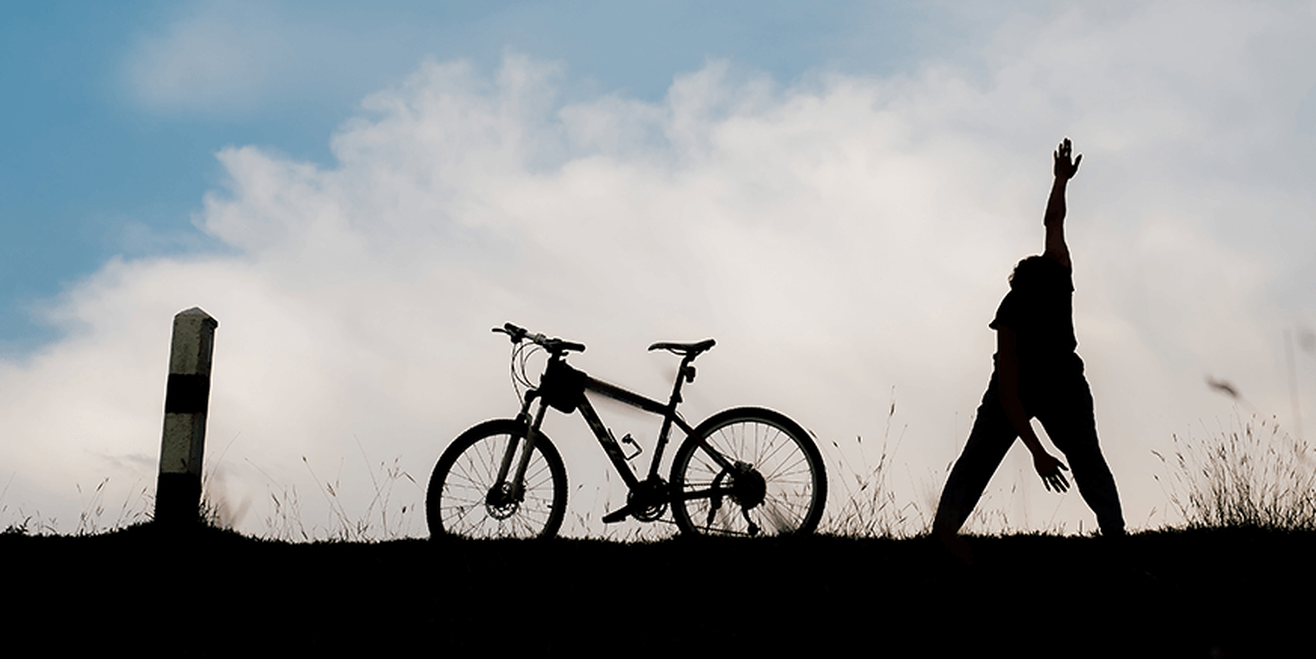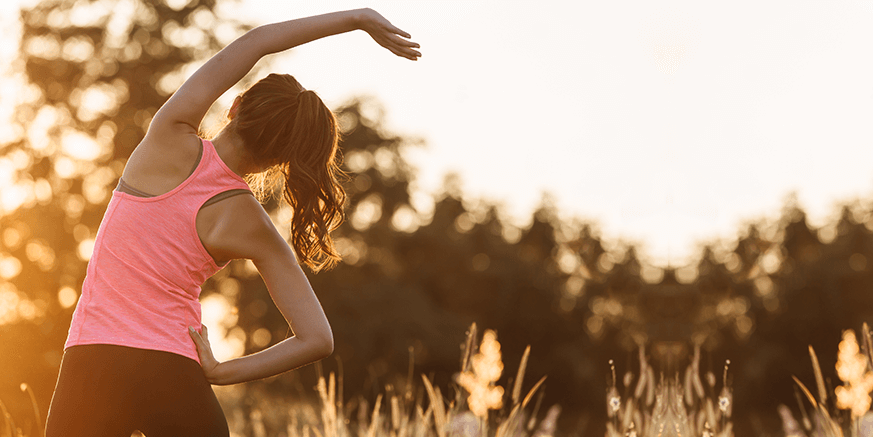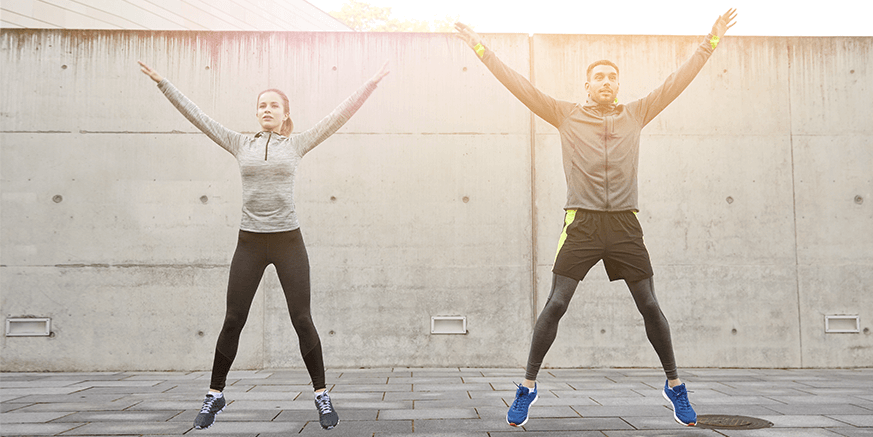Perfect Ways to Warm-Up Before Cycling

Looking for some warmup exercises before cycling! Cycling warm up and cool down exercises can increase your endurance and stamina, allowing for better results when it comes to the fitness side of the activity.
6 Perfect Ways to Warm-Up Before Cycling
Cycling is just like any other sport or exercise, in the sense that it's just as important to properly warm up before you go riding on your #EverydayAdventure. Although it may sound tempting to simply walk out the door, mount your bicycle and ride away, the effects of this impulse might cost you in the long run. Do you need to warm up before cycling? Yes! Warming up prior to cycling can increase your endurance & stamina, allowing for better results when it comes to the fitness side of the activity. Read along to learn 6 ideal warm-ups for any avid cyclist!
- Stretches to warm-up before cycling:- How do you warm up for cycling? Start with stretches before any other warm-up exercise. Stretching helps your muscles loosen up, allowing for better flow of muscle activity & blood circulation. Want to know what a warm-up does to a cyclist? It preps the body for upcoming exercises along with the actual ride. What happens if you don't stretch, you may wonder? Get ready to experience major tightness in your muscles, which can lead to serious strain and even muscle pulls if you end up doing heavy-duty cycling. Although a seemingly easy warm-up activity, the benefits of stretching before cycling are manifold, and definitely help your body tone & build itself the right way in the long run. Meanwhile, why do cyclists warm down? Because warming down is also important after you're done cycling, so as to restore your body and muscles back to their form. There are four types of stretches you can do to ensure an optimum physique while you go on your ride.

- Static Stretches :- Static stretches are ones that you can hold for a long period of time, normally between 10-30 seconds. The positions involved in static stretches are normally ones that are comfortable, yet challenging to the right degree. Static stretches are the most common form of stretching and are found to be the ideal cool-down exercise for a majority of fitness activities, since they focus on slowing your muscles down after a heavy workout.
- Dynamic Stretches:- Dynamic stretches are stretches that involve repetitive motions in a comfortable position. Normally, each stretch is repeated for a total of 10-12 times. These stretches are believed to boost the functional range of motion along with added mobility, agility & stamina, and are therefore performed increasingly by athletes, trainers and fitness lovers. However, dynamic stretching should not be confused with the old school tradition of ballistic stretching. Ballistic stretches involved exercises such as bouncing toe touches and are entirely different from dynamic stretches; they're also rapidly losing popularity due to newer stretching formats. When performing dynamic stretches, your movements are going to be smooth, controlled, and deliberate as opposed to the uneven, jerky forms of ballistic stretches.
- Passive stretching:- When you're engaged in passive stretching, you're normally using some sort of external assistance while executing your forms. An external assistance could be anything from a strap, a yoga brick, leverage or even your own body weight & gravity. During passive stretching, you're relaxing the exact muscle that you're trying to stretch while depending fully on the external assistance to maintain your position. Although passive stretching is a relatively easier form of this exercise, there's always the possible risk of your external assistance having a higher level of strength than you have when it comes to your flexibility. Therefore, expert guidance is strongly recommended.
- Active stretching:- Active stretching solely involves your body and your physical strength along with inner, muscular stretch. This involves actually contracting the muscle opposite to the one that you're stretching. You depend on the muscle opposite to the one you want to relax to initiate the stretch, therefore building muscular force and adding to your strength. However, active stretching is always considered lower in risk value since there's no external assistance involved, and it only involves you and the natural force from your body.
- Leg Swings:- Any cyclist can vouch for the tightness that engulfs the hips if they've been cycling for extensive amounts of time. That is why it's super important to make sure your hip-flexor flexibility is on track, since lack of said mobility can lead to serious injuries. How do you make sure your hips are flexible? You can always start off with a simple hip-flexor stretch that loosens up the muscle for activity. Support yourself on one side with a bar or even your cycle, and swing the opposite leg outward and backwards, making sure your knee and leg are straight at all times. Repeat the exercise at least 10 times per leg.
- Lunges, its different forms:- This one's exclusively for those hamstrings and quads. Runners aren't the only ones that can reap the benefits of this highly effective warm-up exercise. Here's how to make that perfect lunge for a peak biking experience: Start by taking a huge step forward with your right leg and bending it until it's at an angle of 90 degrees. Your left leg should be stretched back, as straight as possible. Stretch by gradually moving your torso upwards & downwards until you feel a stretch on your right thigh. Do at least 10 repetitions on each leg. You can also opt to do the exercise in sets of 10, and for more experienced cyclists, sets of 20 or 30. Lunges will strengthen your hamstrings, thighs and quads, helping you cycle longer, faster, and better. Check out the different types of lunges below and find one that works best for you.
- Walking lunges:- Standing tall with your feet at shoulder distance, step forward into a lunge while bending your knees in order to lower your hips. Push your weight from your back foot to your forward making sure to avoid touching the ground. Do the same for the other leg as well, and repeat this at least 10 times.
- Side Step Lunge:- Stand tall & upright with your feet hip-width apart and slightly bent knees. Keep your left knee aligned with your left toe and step to the left in a controlled motion. While the left foot is still under pressure, bring your right foot towards your left, returning to your original position. Repeat at least 10 times to the left, and the same on the right.
- Squats for that perfect ride:- Squats are the go-to exercise for those who want to lose weight along with others that want to build muscle. While their benefits are manifold, it's also one of the most difficult exercises to do, so best of luck! Let's look at exactly why this particular exercise is one of the best, and how it helps your cycling. Since squats are a compound exercise, they employ every muscle group in your body along with your joints such as the knees and hips. Squats are also effective for cycling since it's your thighs, hips & knees that are used the most for this activity, often for a longer period of time. Read below to know about types of squats, and find your favourite.
- Bodyweight Squat:- Stand with your feet slightly wider apart than your hips. Your toes should be pointed to in a about 5 - 20 degree outward direction. Focus on a spot on the wall right in front of you, and gradually squat as low and possible while keeping your spine as straight as possible. Finding a focus spot helps you stay upright while maintaining your muscular composure.
- Barbell Squat:- The barbell squat uses the barbell tool, and it's the placement of the equipment that determines which <p>muscle groups are activated while you perform your squats. Begin by stepping up to the bar with your face towards it; Grip the bar by stepping under it, avoiding a thumb grip in order to align the forearms with the wrists perfectly. Depending on your flexibility, the width of your grip will be different, and it's always ideal to go with the grip that's most comfortable for you. Now, tighten your core, step back, and form the same position as you did for the bodyweight squat. Find your focus point from earlier, and repeat the same squatting position as before. Make sure you start with gradual movements, building up the pressure as you go. Repeating it at least 10 times will provide the best effects and strengthen not just your knees and thighs, but also your core, back and biceps.
- Butt-kicks:- Butt-kicks work best for loosening up your thighs, hip flexor, hamstrings and butt muscles. This well-known cardio exercise is especially known to strengthen the hamstrings, therefore increasing your cycling speed. It also works your glutes and quads and helps to thoroughly prepare them for rapid movement, which is a requirement if you're going to cycle in India, given the traffic and uneven roads. Whether you're doing your butt kicks in one place or over a set distance, you'll be boosting your heart rate, burning calories and increasing your metabolic rate. Start by standing upright and bring one heel to your glutes while the opposite arm is raised towards your shoulder in a form similar to the way it is while running. Immediately switch to the other side and repeat. Ideally, it's best to repeat butt kicks for at least a minute for optimum warming up and heart rate acceleration.
- Jumping Jacks:- Jumping jacks have long been known for their benefits involving all the muscles of your body. From the feet, legs and torso to your upper body, spine and arms, jumping jacks are the perfect way to loosen up your entire body through one single activity. Here's how to get into this fun yet active warm-up exercise and get all set for your ride. Standing with your feet together, rest your arms by your sides, parallel to your torso. Jump up while widening the distance between your legs and raising your arms up and away from your head. Try to keep both your legs and arms as straight as possible. After the jump, bring both your arms and legs back to your original resting position. Repeat at least 10 times you could also divide this exercise into sets of 10 or 20 for optimum heart rate acceleration.

There you have it, the ideal warm-up exercises that are meant to give you the #EverydayAdventure of a lifetime. So, go ahead, strap on your helmet and ride into the horizon after these stamina-boosting warm-ups!